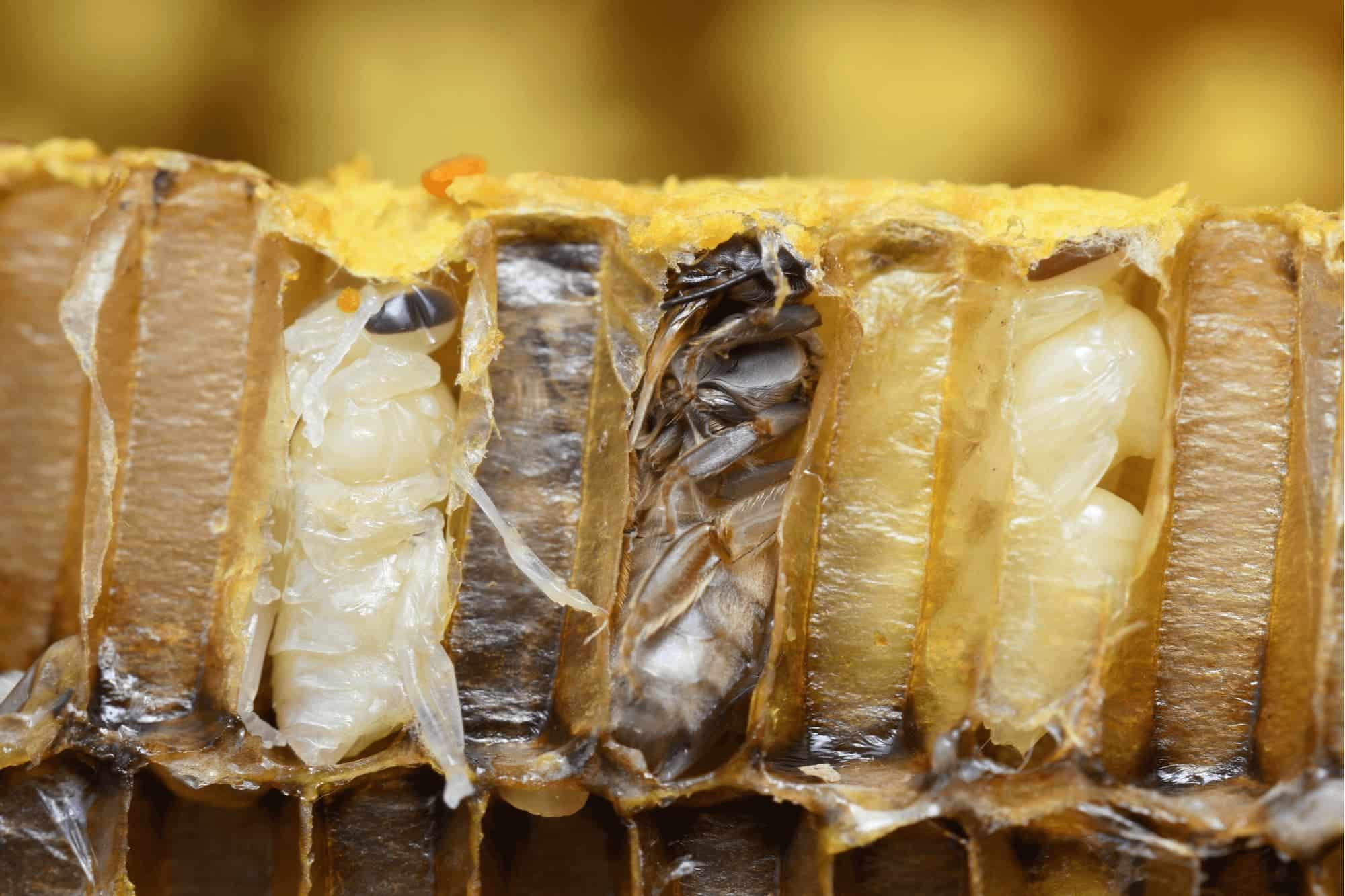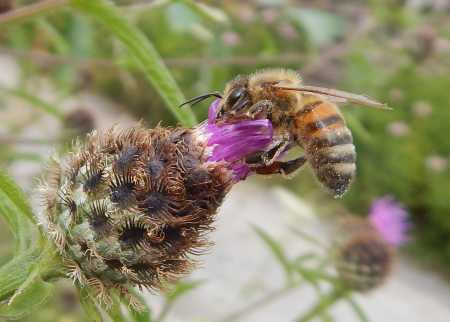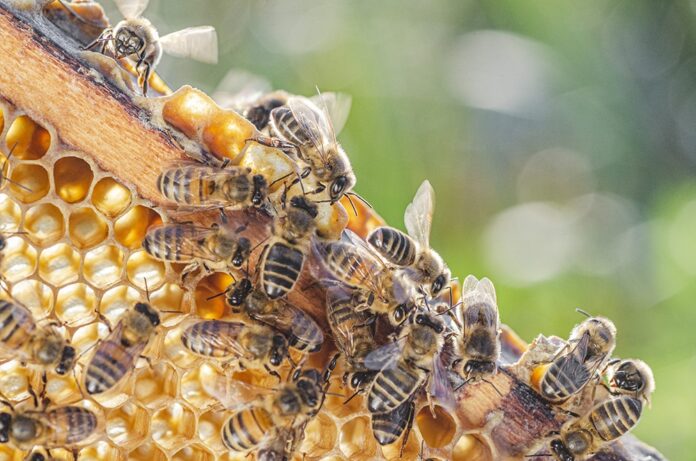Bees typically live for about 4-6 weeks during the summer, while queen bees can live up to 5 years. Bees’ lifespan varies based on their role within the colony.
Bees are fascinating creatures that play a crucial role in our ecosystem. They are known for their complex social structure and diligent work ethic. From pollinating flowers to producing honey, bees are essential for maintaining biodiversity and food production. Understanding the lifespan of bees can provide insight into their behavior and impact on the environment.
Let’s delve deeper into the intriguing world of bees and explore the factors that influence their lifespan.
Introduction To Bee Lifespans
Bees have varying lifespans based on their role within the hive. Worker bees typically live around 6 weeks, while queen bees can survive up to 5 years. Drones, the male bees, have the shortest lifespan, usually living only a few weeks.
Factors Influencing Lifespan
Several factors influence the lifespan of bees. Understanding these factors can help us appreciate the intricacies of their lives and the importance of their role in the ecosystem.
Let’s explore some of the key factors that can affect how long bees live:
- Genetics: Just like humans, bees inherit certain traits and genetic predispositions from their parents. Genetic factors can influence the overall lifespan of a bee.
- Environment: The environment in which bees live plays a vital role in their longevity. Factors such as temperature, humidity, and availability of food sources can impact their lifespan.
- Diet: Bees primarily feed on nectar and pollen, which provide them with the necessary nutrients and energy. A well-balanced diet is crucial for their overall health and longevity.
- Stress: Bees can experience various forms of stress, such as exposure to pesticides, diseases, or changes in their habitat. Stress can significantly impact their lifespan and overall well-being.
- Parasites and Predators: Bees face threats from parasites like Varroa mites and predators like wasps and birds. These external factors can shorten the lifespan of bees if not properly managed.
Species Variations
It’s important to note that the lifespan of bees can vary depending on the species. Different bee species have evolved to adapt to various habitats and ecological niches, resulting in variations in their lifespans. How Long Do Bees Live?
For instance, honey bees (Apis mellifera) have an average lifespan of 5 to 6 weeks during the summer season. However, the queen bee can live for several years, with some queens reaching up to 5 years of age.
On the other hand, bumblebees (Bombus spp.) have shorter lifespans, usually ranging from a few weeks to a few months. The lifespan of solitary bees, such as mason bees and leafcutter bees, can vary from a few weeks to several months.
These variations in lifespans reflect the different reproductive strategies, social structures, and environmental adaptations of various bee species.
Understanding the factors influencing bee lifespans and the variations among different species can deepen our appreciation for these incredible creatures. Stay tuned as we delve further into the fascinating world of bees and uncover more intriguing aspects of their lives!
Queen Bees: The Longest Living
Queen bees are the longest-living members of the colony, with lifespans ranging from 2 to 5 years. Worker bees, in contrast, live for just a few weeks during the summer. Drones, or male bees, have the shortest lifespan, perishing after mating with the queen.
When it comes to the lifespan of bees, the queen bee is the longest living. Queen bees are the only type of bee that can lay fertilized eggs, which is essential for the survival of the hive. In this section, we will discuss the role of queen bees in the hive, their lifespan, and reproduction.
Role In The Hive
Queen bees play a crucial role in the hive. They are responsible for laying all the eggs, which hatch into worker bees, drones, and future queen bees. The queen’s pheromones also help regulate the behavior of other bees in the hive, ensuring that they work together efficiently.
Lifespan And Reproduction
Queen bees can live for up to five years, which is much longer than the lifespan of worker bees and drones. The queen’s long lifespan is due to her unique diet of royal jelly, which is secreted by worker bees. This diet provides the queen with all the nutrients she needs to lay thousands of eggs throughout her lifetime.
In terms of reproduction, the queen bee can lay up to 2,000 eggs per day. These eggs are fertilized by the drones, and the resulting larvae are raised by the worker bees. The queen bee can choose whether to lay fertilized or unfertilized eggs, which will hatch into drones or worker bees, respectively. Queen bees are the backbone of the hive, providing essential eggs and pheromones that keep the colony functioning efficiently. With a lifespan of up to five years and the ability to lay thousands of eggs, the queen bee truly is a remarkable insect.
Worker Bees: Tireless Toilers
Worker bees, known for their tireless work ethic, have a relatively short lifespan, ranging from a few weeks to a few months. They dedicate their lives to tasks such as foraging for nectar, producing honey, and caring for the hive, making them essential to the survival of the colony.
Summer Vs. Winter Workers
Worker bees are the backbone of a honey bee colony, tirelessly toiling to keep the hive running smoothly. Within the worker bee category, there are two distinct groups: summer workers and winter workers. Let’s explore the differences between these two groups and how their roles contribute to the overall lifespan of a worker bee.
Daily Duties And Lifespan
Summer Workers: During the warmer months, summer workers are responsible for a variety of tasks within the hive. They gather nectar and pollen from flowers, which they bring back to the hive to produce honey and feed the colony.
Additionally, summer workers build and maintain the hive, care for the queen and her brood, and defend the hive against intruders. These hardworking bees typically live for about six weeks due to the intense physical demands of their responsibilities. Winter Workers: As the seasons change and temperatures drop, the duties of the worker bees shift. Winter workers focus primarily on keeping the colony warm and ensuring its survival during the colder months. They form a tight cluster around the queen, shivering their flight muscles to generate heat.
This cluster also helps conserve energy by reducing the hive’s surface area. Winter workers have a longer lifespan compared to their summer counterparts, typically living for several months. While the lifespan of a worker bee may vary depending on factors such as genetics and environmental conditions, the general pattern of shorter lives for summer workers and longer lives for winter workers remains consistent. The tireless dedication of these worker bees ensures the survival and success of the entire honey bee colony.
Drone Bees: A Brief Existence
Drone bees have a brief existence, playing a crucial role in the honeybee colony. Unlike the queen and worker bees, drones have a unique purpose and a short lifespan. Understanding the lifecycle and role of drone bees provides insight into the intricate dynamics of a beehive.
Purpose Of Drones
Drone bees serve a singular purpose within the colony: mating with a queen bee. Their primary role is to fertilize the queen, ensuring the continuation of the hive. Unlike worker bees who forage for food and maintain the hive, drones exist solely for the act of mating.
Lifespan And Mating
Drone bees have a short lifespan, typically living for around 8 weeks. Their existence revolves around mating with a queen, after which they die. During the mating flight, a drone transfers semen to the queen, and once this task is complete, the drone’s life comes to an end.
The Development Stages Of Bees
Bees go through four main development stages: egg, larva, pupa, and adult. The lifespan of a worker bee is about 4-6 weeks, while queen bees can live 2-3 years. Drones, the male bees, typically live around 8 weeks.
Egg To Larva
Bees go through a fascinating journey of development, starting from an egg and gradually transforming into adult bees. The first stage in this process is the egg to larva stage. During this stage, the queen bee lays eggs in specially constructed cells within the hive. These cells are made from beeswax and are meticulously maintained by the worker bees. The eggs are small, oval-shaped, and almost transparent. They measure about 1.2 millimeters in length and are typically attached to the bottom of the cell.
Once the eggs are laid, they are incubated by the heat generated by the worker bees. This heat helps to maintain the ideal temperature for the eggs to develop. After a few days, the eggs hatch, and tiny larvae emerge. The larvae have a worm-like appearance and are completely dependent on the worker bees for their nourishment and care.
Pupal Transformation
The next stage in the development of bees is the pupal transformation. After the larvae hatch, they are fed a mixture of pollen and honey called “bee bread” by the worker bees. This nutrient-rich diet allows the larvae to grow rapidly. As the larvae grow, they molt several times, shedding their outer skin to accommodate their increasing size. During each molt, the larvae are fed and groomed by the worker bees. This process continues for about five to six days, after which the fully grown larvae spin a cocoon around themselves using silk produced by their salivary glands.
Inside the cocoon, the larvae undergo a remarkable transformation. They enter the pupal stage, where they undergo complete metamorphosis. This means that their body structures are completely reorganized and transformed. The pupae do not move or feed during this stage but undergo significant changes internally. Within the pupal case, the body of the bee takes shape and develops various features such as wings, legs, and antennae. This process can take anywhere from six to twelve days, depending on the bee species and environmental conditions.
Once the transformation is complete, the fully developed adult bee emerges from the cocoon. The development stages of bees provide a fascinating insight into the intricate and complex journey of these remarkable creatures. From a tiny egg to a fully developed adult bee, each stage is crucial for the survival and continuation of the bee colony. Understanding these stages helps us appreciate the resilience and beauty of these essential pollinators.

Credit: www.bensbees.com.au
The Impact Of Environment On Bee Longevity
When it comes to the lifespan of bees, the impact of the environment cannot be overlooked. The environment, including climate and human activities, plays a crucial role in determining the longevity of bees.
Climate Effects
Climate has a significant impact on the lifespan of bees. Extreme temperatures can have adverse effects on bees, affecting their ability to forage and navigate. Hot and dry conditions can lead to dehydration, while cold temperatures can reduce their activity and foraging capabilities.
Excessive rainfall can also pose a threat to bees by affecting their ability to fly and forage for food. Climate change can disrupt the natural patterns that bees rely on for survival, leading to a decline in their population.
Human Activities
Human activities can have a detrimental impact on bee populations and their lifespan. Pesticide use can directly harm bees, affecting their ability to forage and navigate back to the hive. Habitat destruction due to urbanization and agricultural expansion can also limit the availability of food sources for bees.
Furthermore, air and water pollution can have indirect effects on bee health, impacting the quality of the nectar and pollen they consume. Monoculture farming practices can limit the diversity of available food sources for bees, affecting their overall health and lifespan.
Challenges To Bee Survival
Bees face various threats that impact their longevity and overall survival. These challenges include exposure to harmful pesticides and chemicals, as well as vulnerability to diseases and parasites.
Pesticides And Chemicals
Pesticides and chemicals pose a significant risk to bee populations, leading to harmful effects on their health and lifespan. Exposure to these substances can weaken bees’ immune systems and disrupt their natural behaviors.
Diseases And Parasites
Diseases and parasites are major concerns for bee colonies, causing widespread harm and reducing the lifespan of individual bees. These threats can spread rapidly within a hive, impacting the overall health of the bee population.
Credit: www.quora.com
Conservation Efforts For Bee Populations
Creating Bee-Friendly Habitats involves planting diverse flowers and shrubs that provide nectar and pollen sources for bees.
Avoiding the use of pesticides and herbicides helps maintain a healthy environment for bees to thrive.
Supporting Organic Farming promotes practices that avoid synthetic chemicals, benefiting bee populations and overall biodiversity.
Crop rotation and companion planting are common organic farming methods that enhance bee habitats.
Conclusion: The Significance Of Bees
Bees play a crucial role in our ecosystem, and understanding their lifespan is significant. The lifespan of bees varies depending on their role in the hive, with worker bees living for a few weeks, drones for a few months, and queens potentially living for several years.
By recognizing the lifespan of bees, we can better appreciate their importance and work towards their conservation.
Ecosystem Balance
Bees play a crucial role in maintaining the balance of ecosystems.
They are vital pollinators that support biodiversity and plant reproduction.
Human Reliance On Bee Health
Humans heavily rely on bees for pollination of crops and food production.
Without bees, many fruits, vegetables, and nuts would be scarce.

Credit: www.buzzaboutbees.net
Frequently Asked Questions
How Long Do Bees Live In The Wild?
Bees in the wild typically live for about 5 to 7 weeks during the summer months. However, the lifespan of worker bees is shorter during the winter season, as they can survive for several months.
What Is The Lifespan Of A Queen Bee?
A queen bee can live for 2 to 3 years. The longevity of the queen bee is significantly longer than that of worker bees due to her role in the hive’s reproduction and maintenance.
How Long Do Male Bees (drones) Live?
Male bees, known as drones, have a relatively short lifespan of around 8 weeks. Their primary purpose is to mate with a queen bee, after which they die. Drones are expelled from the hive during the winter months.
Conclusion
The lifespan of bees varies depending on their roles in the colony. Worker bees, which make up the majority of the colony, live for several weeks to a few months. Queen bees, on the other hand, can live up to five years.
The survival of bees is crucial for our ecosystem as they play a vital role in pollinating plants. Therefore, it is important to understand their lifespan and work towards preserving their habitats.


